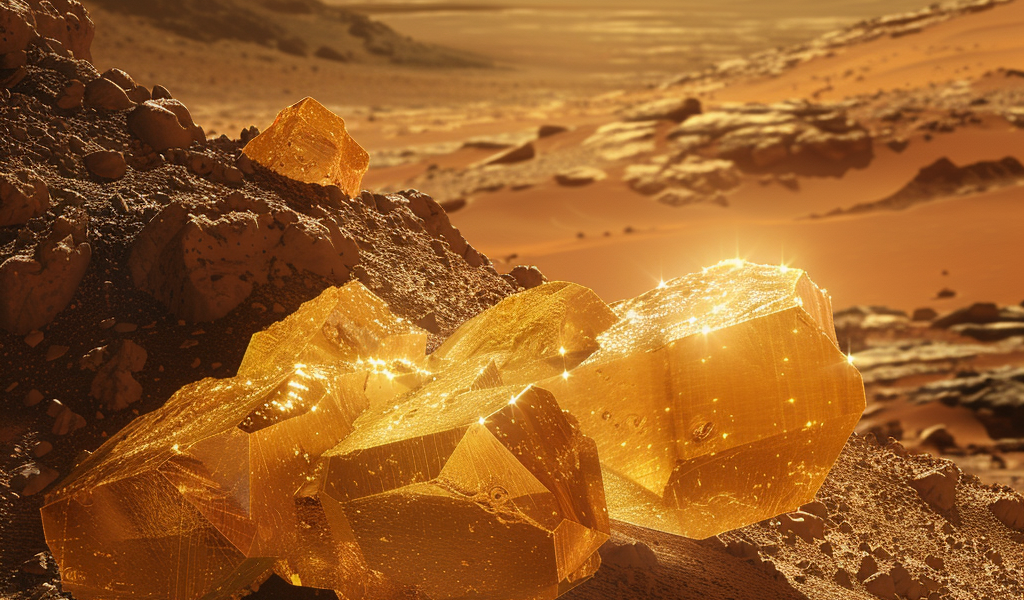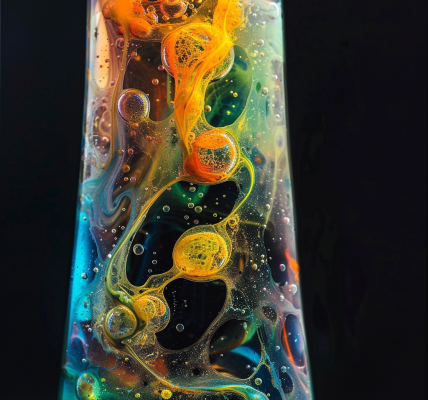A recent unexpected discovery on Mars has captivated scientists and space enthusiasts alike. The Curiosity rover, while traversing the Martian landscape, inadvertently cracked open a seemingly ordinary rock, unveiling a striking surprise: bright yellow crystals of elemental sulfur, commonly referred to as brimstone. This finding marks a significant milestone, as it is the first time pure sulfur has been identified on the Red Planet.
The event took place in the Gediz Vallis Channel, an area already known for its intriguing geological features. The discovery raises questions about the abundance of elemental sulfur in this region, as many other rocks in proximity exhibit similar characteristics to the one Curiosity encountered. This suggests that the presence of pure sulfur might not be an isolated incident but rather indicative of a broader geological phenomenon.
According to Ashwin Vasavada, project scientist for the Curiosity mission at NASA’s Jet Propulsion Laboratory, “Finding a field of stones made of pure sulfur is like finding an oasis in the desert. It shouldn’t be there, so now we have to explain it. Discovering strange and unexpected things is what makes planetary exploration so exciting.” This sentiment encapsulates the thrill of exploration, where each new finding adds another piece to the puzzle of Mars’s geological history.
Understanding the significance of this discovery requires a brief look at the chemistry involved. Sulfates, which are salts formed from sulfur compounds, are relatively common on Mars. They typically form when sulfur interacts with other minerals in the presence of water. As water evaporates, these minerals crystallize, leaving behind sulfate deposits. In contrast, pure sulfur forms under a much narrower set of conditions, which have not been previously documented in the area where Curiosity made its find.
This raises intriguing questions about the geological processes that may have occurred on Mars. The presence of pure sulfur suggests that unique conditions once existed in the Gediz Vallis Channel, warranting further investigation into the planet’s past. Scientists are eager to explore how these processes could have led to the formation of elemental sulfur, which remains a mystery.
Moreover, sulfur is a critical element for life as we know it. It plays an essential role in the formation of amino acids, which are vital for protein synthesis in living organisms. While the discovery of pure sulfur does not directly indicate the presence of life on Mars, it reinforces the notion that the planet once had conditions that could have supported life. The ongoing exploration of Mars continues to reveal remnants of the elements and conditions that living organisms require.
Curiosity’s ability to analyze and identify these sulfurous rocks highlights the importance of robotic exploration in expanding our understanding of Mars. With limited access to the Martian surface from Earth, the rover serves as an invaluable tool for gathering data and conducting experiments. The rover’s journey through the Gediz Vallis Channel has opened up new avenues for research, providing insights into the planet’s geological history and the potential for past habitability.
In the days following the sulfur discovery, Curiosity captured images of another rock that bears a striking resemblance to the one that was cracked open. This ongoing analysis suggests that the investigation into the Gediz Vallis Channel is far from over. Scientists are keenly interested in studying these formations further, as they may hold critical information about the environmental conditions that existed on Mars billions of years ago.
The implications of this discovery extend beyond mere curiosity; they may reshape our understanding of Mars’s geological processes and its potential for hosting life. As researchers continue to analyze the data collected by Curiosity, they hope to unravel the mysteries of the Red Planet and its history.
In conclusion, the accidental discovery of pure sulfur on Mars by the Curiosity rover has opened up a plethora of questions regarding the planet’s geological past and the conditions that may have once prevailed there. As scientists delve deeper into this finding, it is clear that the exploration of Mars is filled with surprises, each one bringing us closer to understanding the complexities of our neighboring planet.





